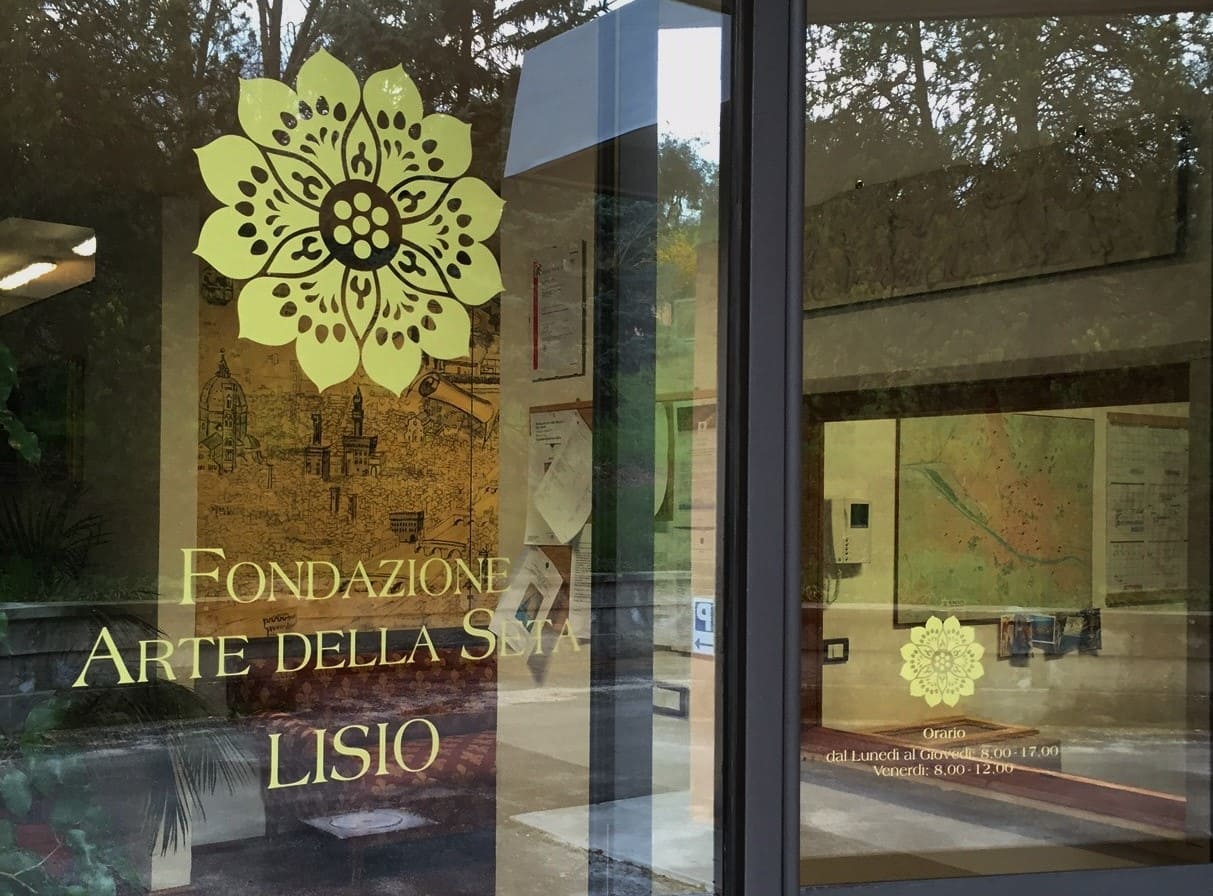Fondazione Arte della Seta Lisio
We are on the hills just outside Florence in a place that encompasses a love of tradition, fine manufacturing, high education, a center for research, restoration and culture.

The co-protagonists of this adventure are the manual Jacquard looms of the late 19th century; the loom setters with their attention and skill; the weavers with their extreme precision and concentration; the love, dedication, and curiosity of Giuseppe Lisio who in 1906 founded his first factory in Florence and of his daughter Fidalma who, wishing to protect her father’s work, continued the activity and also opened a school dedicated to that purpose.
I have deliberately spoken of co-protagonists because the main actor is the “value of time”.
Yes, because only the time needed for manual weaving can allow the production of brocades and velvets, worked, chiseled, curled, and cut off such workmanship and preciousness.
The workmanship is carried out entirely by hand, using silk and gold and silver yarns as well as new materials, the result of the most advanced technological research.
Just as an orchestra director selects and prepares his orchestral players, so the weaver begins the process with the preparation of the handloom and then there are eleven steps: from the dyeing of the silk to the creation of the Jacquard boards, from the warping for the ground warp (preparation of the bobbins, creation of the warp and folding on the warp beam) to the preparation of the bobbins for the pile (for example from 800 to about 3600 bobbins per type of loom).
The intervention of the weaver is a fundamental part of the creation: attention to design, choice of precious yarns and accurate execution are the outstanding elements of Lisio weaving. An expert weaver can produce about 20-25 centimeters per day of velvet and 7-10 cm per day of brocade, depending on the range of colors used.
The fabric is born from the meeting of the warp and the weft in a plot originated from what is most likely the first complex activity, (from cum-plectere weave together).
Weaving then is the art of composing. As in the weaving of relationships, it is only through interaction in which time and care are dedicated that valuable results will be obtained.


